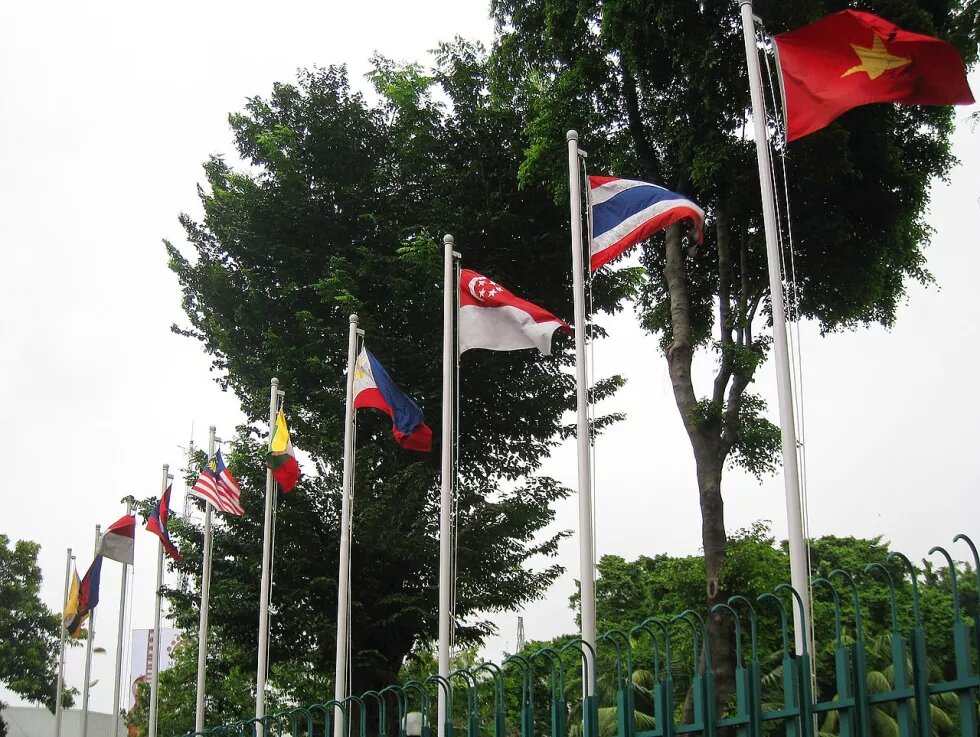
The Ayeyawady-Chao Phraya-Mekong Economic Cooperation Strategy (ACMECS), a regional cooperation framework involving Thailand, Cambodia, Laos, Myanmar, and Vietnam, was revived in 2018 in part to provide its members with an alternative source of funding to enhance connectivity in mainland Southeast Asia. In the meantime, global powers such as China and the US, as well as emerging economic players in Asia like Japan, South Korea, and India, have actively engaged with the Mekong Region through various sub-regional initiatives, thereby exerting influence in the region. Within an area congested with multilateral frameworks, overlapping agendas and an abundance of funding, ACMECS faces formidable challenges ahead to stay relevant.

The Mekong River is a vital source of fishery and income for more than 60 million people. Its flow is a key component of agricultural production, and the riverbank is home to over 95 indigenous groups. However, for extra-regional powers in Southeast Asia, the Mekong is becoming an arena where greater powers vie to maintain their influence and interests via a range of sub-regional initiatives such as India’s Mekong-Ganga in 2000, Japan’s Mekong Japan Cooperation in 2007, and the Mekong-ROK by South Korea in 2011, to name a few. The major powers in the world, the United States and China, are also involved in the Mekong sub-region. The United States launched the Mekong-U.S. Partnership (MUSP) in 2020 to promote its Indo-Pacific Strategy, building on the earlier Lower Mekong Initiative (LMI). Meanwhile, China has been utilizing the Lancang Mekong Cooperation (LMC) to advance its Belt Road Initiative in mainland Southeast Asia. As a result, the Mekong sub-region is saturated with multilateral frameworks with overlapping agendas, making it a “theater of competition”.
Amidst this complicated web of frameworks, Thailand created its own initiative in 2003 the Ayeyawady-Chao Phraya-Mekong Economic Cooperation Strategy (ACMECS), a regional cooperation framework between Thailand, Cambodia, Laos, Myanmar, and Vietnam. However, it disappeared behind the shadows of Thai political infighting for more than a decade. In 2018, it was resurrected for two main reasons, both of which reflect Thailand’s self-perception as a lead actor in mainland Southeast Asia: First, to boost Thailand’s position as an economic hub for transport and logistics, and trade and investment in mainland Southeast Asia as well as to bridge the development gap with its neighbouring countries. These plans are outlined in the ACMECS Master Plan 2019-2023. The second reason is improving the coordination of policies and interests among ACMECS members all located in the lower Mekong region. Although countries have been affected by the construction of China’s dams located upstream of the Mekong, ASEAN has paid scant attention to these challenges largely because they only affect five out of 10 ASEAN member states. Furthermore, tensions in the Mekong are unlikely to proliferate into an armed conflict as witnessed with the South China Sea dispute. Thus, minilateralisms such as ACMECS offer secondary states with an alternative option to address specific concerns, which have been overlooked or underappreciated by wider regional forums such as ASEAN.
Achieving these goals are not simple. Within a geographical area congested with a myriad of multilateral frameworks, numerous development partners and a rising China, Thailand faces the challenge of persuading its neighbouring states to the benefits of ACMECS and to support it. For starters, this is particularly difficult because Cambodia and Laos are recipients of huge amounts of Chinese aid and are strategically close to China although both also receive support from Vietnam. On the other hand, Vietnam also sees itself as the de facto leader in mainland Southeast Asia in the form of the Cambodia-Laos-Vietnam Development Triangle Area (CLV-DTA), a minilateral framework focusing on transborder economic cooperation. Similar to ACMECS, the leaders of CLV-DTA agreed to prioritize infrastructure at the 10th CLV Summit in 2018, based on the Master Plan on ASEAN Connectivity. According to the Foreign Investment Authority under the Ministry of Planning and Investment, Vietnam invested in 65 projects in Laos, amounting to US$ 2 billion and 48 projects in Cambodia worth US$1.6 billion in the same year.
In contrast, the establishment of the ACMECS fund in 2018 to implement the Master Plan has been progressing slowly. In 2019, the Thai cabinet pledged US$200 million while the CMLV countries committed to contributing US$100 million. In addition, Thailand convinced the first batch of Development Partners (DPs) including Australia, Japan, South Korea and the United States which promised to provide an additional US$ 200 million and technical assistance. Although Bangkok is expected to establish the ACMECS fund and a secretariat by the end of 2023, the ROK went ahead and made the first contribution of US$1 million in 2021. In 2022, Japan contributed US$1.38 million, was equally distributed to ACMECS member states. Each members received approximately US$ 278,000 between April 2022-March 2023 in support of Small and Medium Enterprises (SMEs) in four targeted industries.
While the ROK and Japan deserve recognition for supporting Thailand’s initiatives, their contributions are overshadowed by China’s Mekong - Lancang Cooperation Special Fund (MLCSF), which was created in 2016, which boosts a total amount of US$ 300 million. With this fund, China has approved US$ 4.016 million to support eight Thai-led projects under the supervision of seven agencies in 2022, according to Thailand’s Ministry of Foreign Affairs. Similarly, in the same year, Cambodia’s Minister of Foreign Affairs and International Cooperation received US$ 4.336 million from MLCSF to support its 13 projects. Moreover, there are other sources of development funding from other sub-regional frameworks in the Mekong, growth triangles in the area and investment trickling in from other countries.
While providing smaller and weaker states with the opportunity to diversify their relations with larger powers reduces the prospects of over-dependency and enhances relative autonomy, there is no doubt ACMECS is up against fierce competition in a crowded field. Clearly, ACMECS’ biggest constraint is funding, which is predominately sourced from external partners, most of whom have made a commitment but have yet to transfer the funds, have also established their own multilateral frameworks. With that, in order for ACMECS to matter in the Mekong sub-region, Thailand needs to ensure that the DPs not only live up to their promises but also support ACMECS’ initiatives in a more consistent manner. Currently, Thailand’s request for additional funding from Japan is under review but has not been guaranteed. It does not help either that Thailand’s foreign policy has often been held hostage to political instability which has ensued for the past two decades. With these challenges in mind, it may be time for Thailand to re-think ACMECS. After all, what ACMECS is offering is no match and no different to what other frameworks in the Mekong sub-region are providing.
__
Dr. Chanintira na Thalang is Professor at the Faculty of Political Science, Thammasat University. Her current research interests include ASEAN, Global IR, ethnic conflicts and ethnonationalism with a special focus on Indonesia, Thailand and the Philippines.
Dr. Attakrit Patchimnan is Professor at the Faculty of Political Science, and Director of Sanya Dharmasakti Institute for Democracy, Thammasat University. His current research interests include public policy, game theory and institutional economics with a special focus on Thailand.
The views expressed in this article are not necessarily those of Heinrich Böll Stiftung.

